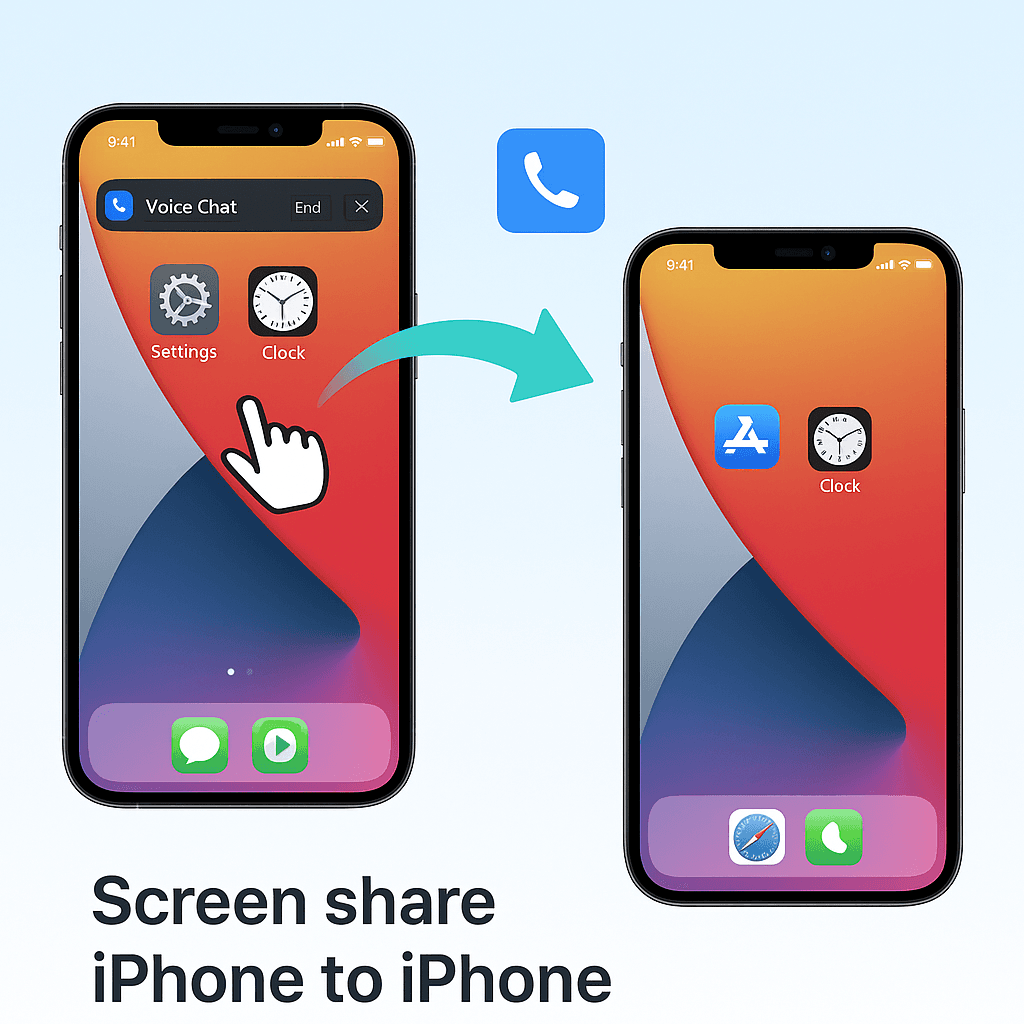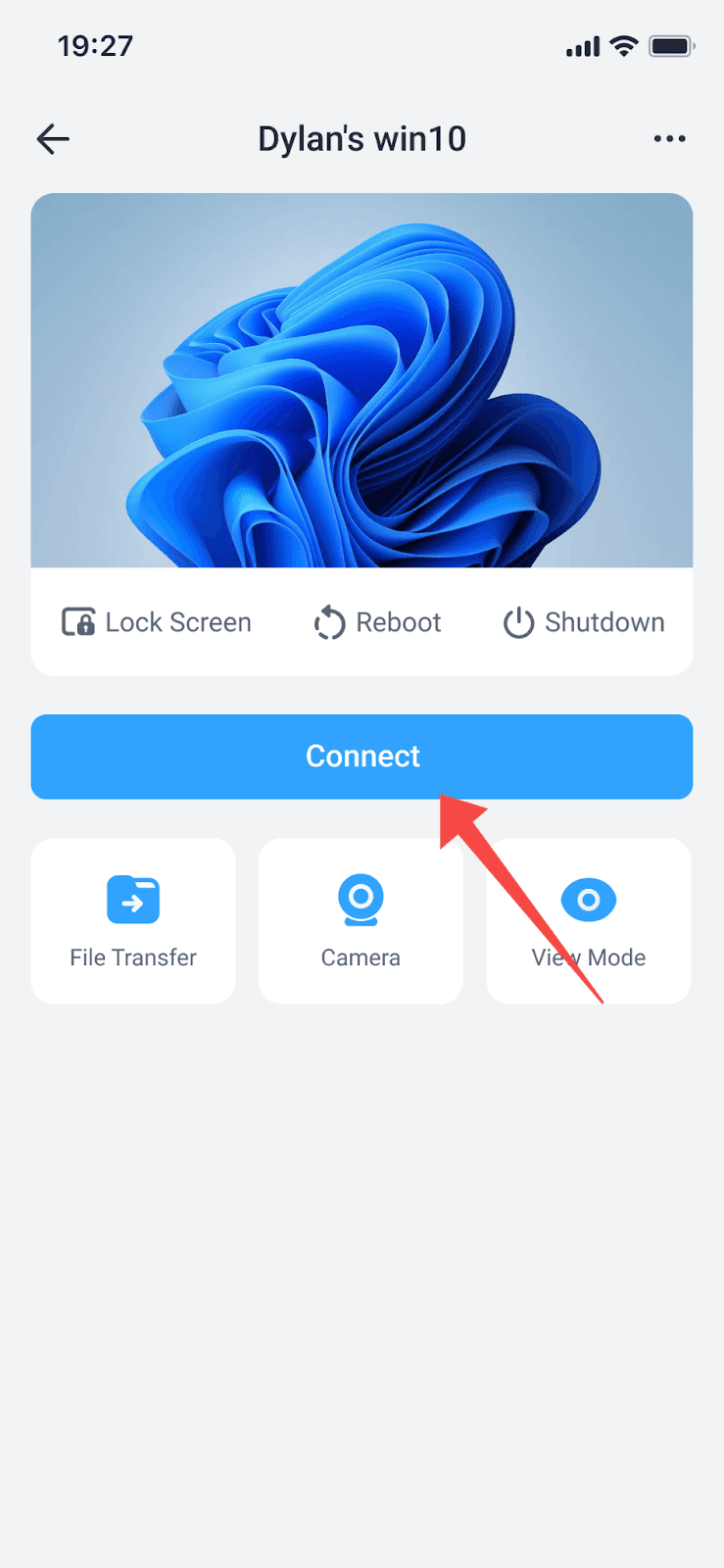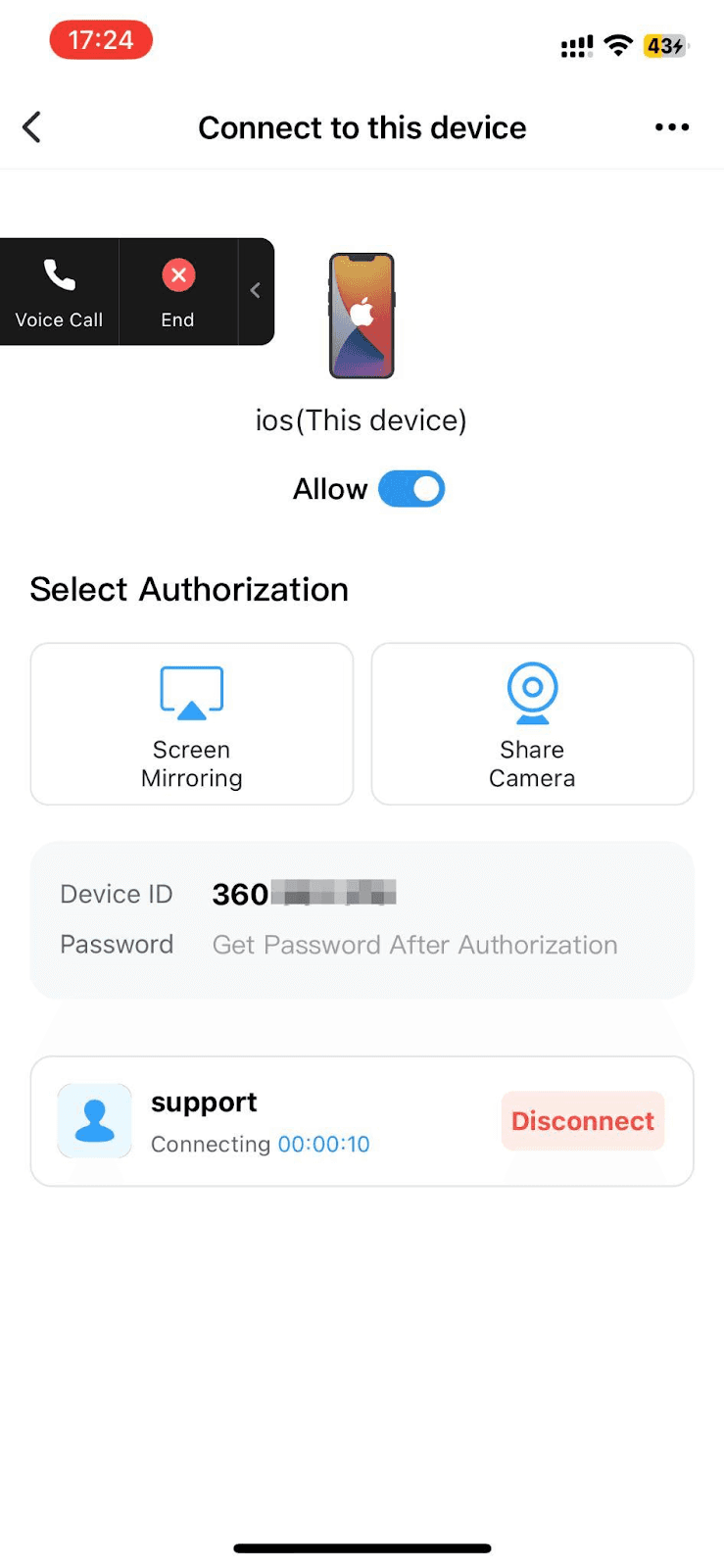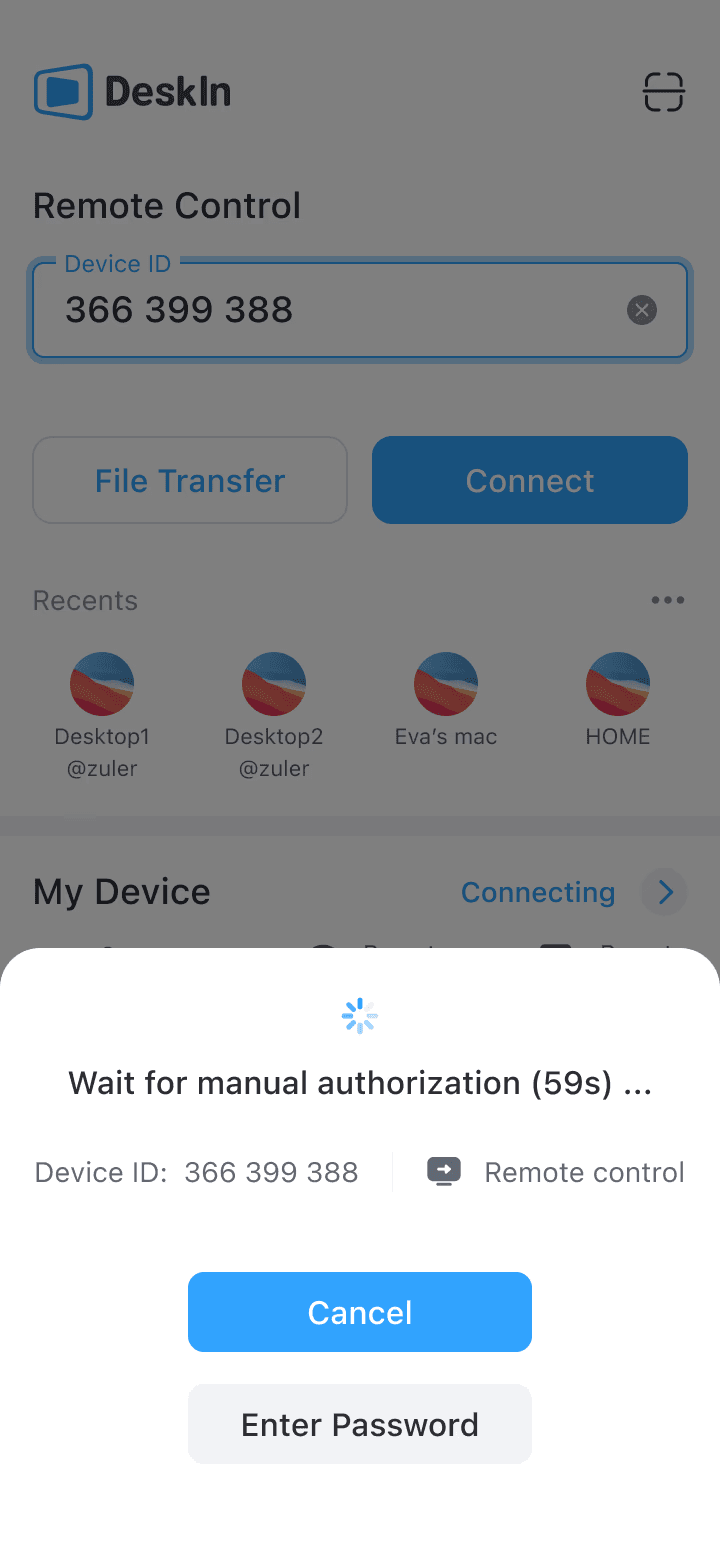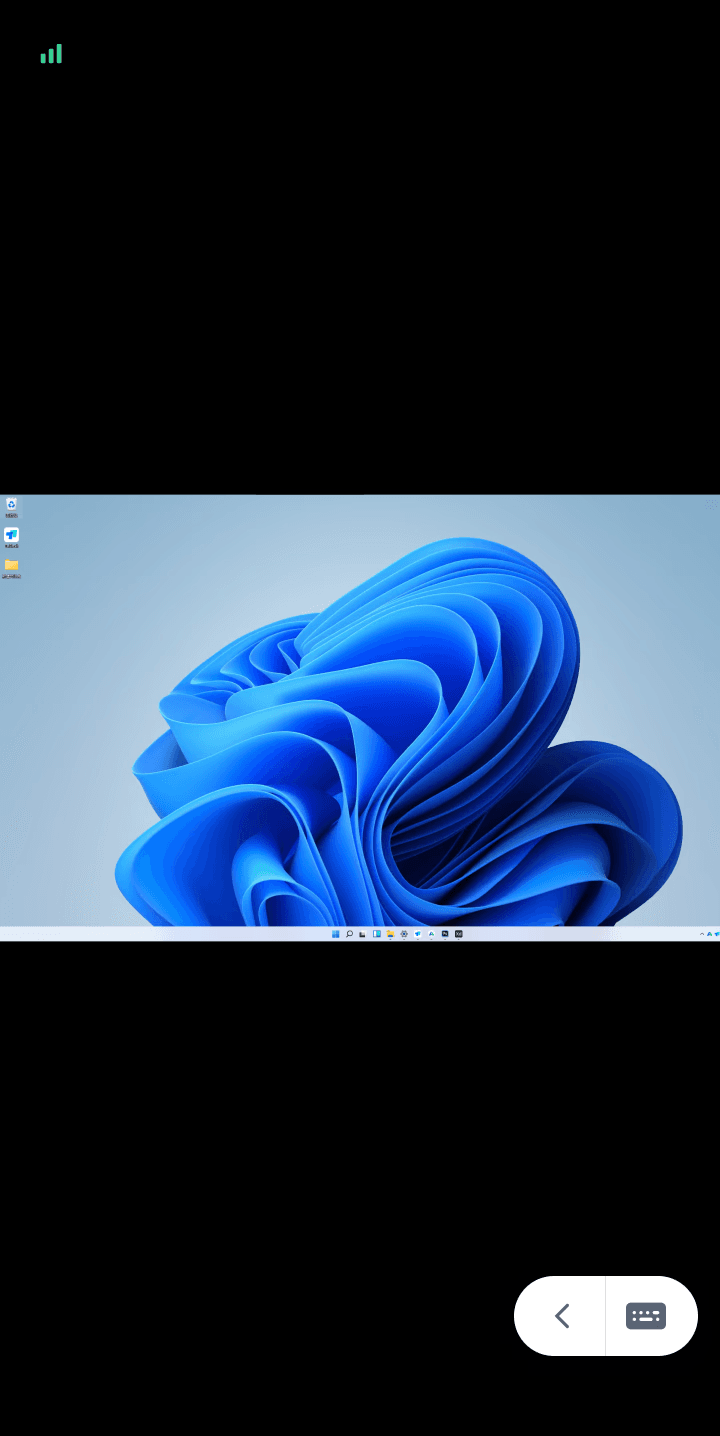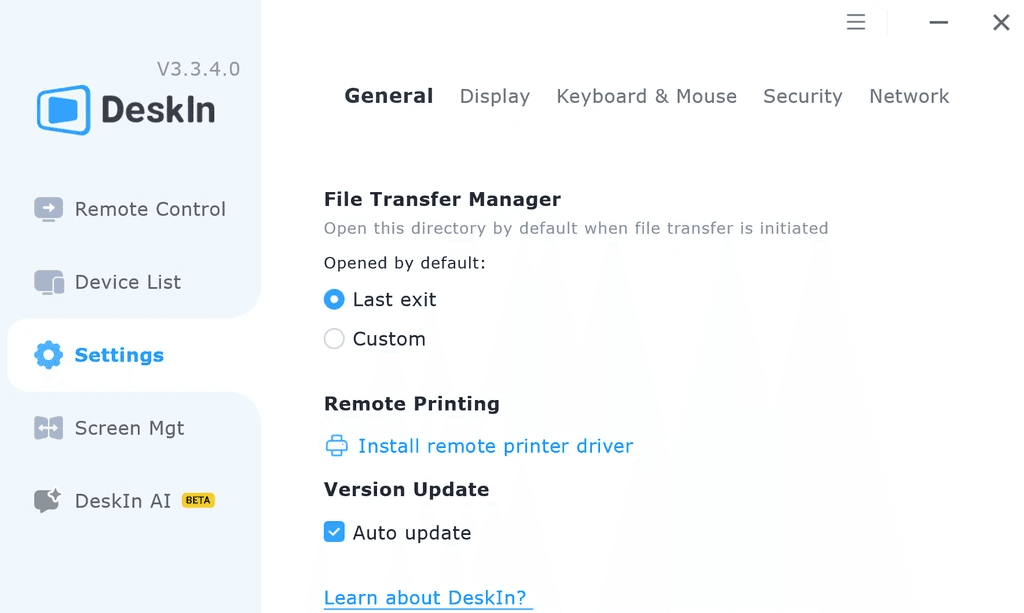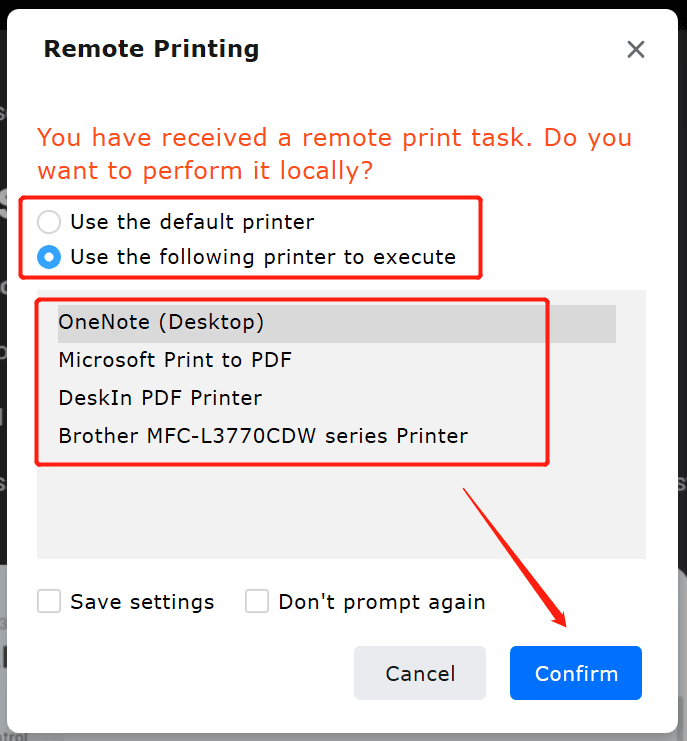In the world of gaming, milliseconds matter. One frame of lag, and boom, you’re toast. That’s why remote gaming software like Parsec became a fan favorite: smooth, responsive, and purpose-built for streaming high-performance games from one device to another.
But it’s 2025. The bar is higher now. And while Parsec walked so others could run, one platform has stepped up and sprinted ahead: DeskIn.
If you’re hunting for the best Parsec alternative, something faster, more flexible, and built for both gaming and beyond, keep reading. This one’s for you.
What is Parsec?
Parsec is a well-known remote gaming software that lets you stream games from your high-end PC to another device, be it a laptop, tablet, or low-spec machine, with impressively low latency. It's become a favorite among gamers who want LAN-like multiplayer over the internet or want to play PC games from low-end devices.
Advantages of Parsec
Low latency performance as low as 10–60ms on mobile networks, and 10–30ms on Wi-Fi.
Support for 4K 60fps and even higher frame rates on high-refresh displays.
Multiplayer rooms for local-style co-op from different locations.
Disadvantages of Parsec
Limited to gaming use cases. No remote productivity, IT support, or collaboration tools.
No iOS support, Apple users are left out. Parsec doesn’t support iPhones or iPads, cutting off a huge portion of mobile users from the experience.
Stability concerns are reported during high-traffic sessions or mobile usage. Despite its low latency, Parsec can experience connection drops or stream degradation during peak usage times or unstable mobile networks.
Lack of feature depth: no file transfers, screen extension, or clipboard sync. These are standard in modern remote tools, but absent here.
The free version is not allowed for commercial use, making it less ideal for professionals or studios.
The Best Alternative to Parsec: DeskIn
DeskIn takes everything great about Parsec and enhances it with enterprise-level features, broader device compatibility, and rock-solid stability.
It’s not just a remote gaming software. It’s an all-in-one platform that bridges remote gaming, productivity, and remote support.
Why DeskIn is the Best Alternative to Parsec
DeskIn isn't just trying to match what Parsec does well; it's redefining the remote access experience. Here's a deeper look at what sets it apart:
Unmatched Connection Quality and Performance

DeskIn is built with gamers in mind, prioritizing low-latency and crystal-clear visuals across a variety of network conditions. While Parsec may edge slightly ahead on paper in latency over ultra-fast Wi-Fi, DeskIn proves itself in real-world environments:
Mobile Network Latency: 30–90ms with smooth reconnection during signal drops.
Wi-Fi (FHD): 25–50ms, maintaining input responsiveness for competitive games.
Wi-Fi (4K): 50–100ms with consistent 60fps playback, ideal for immersive RPGs and high-motion gameplay.
Unlike Parsec, DeskIn handles latency spikes more gracefully, keeping gameplay fluid even when conditions aren't perfect.

True Cross-Platform Compatibility
DeskIn provides native support for Windows, macOS, Android, and iOS. This gives it a clear edge over Parsec, which still lacks iOS support entirely. Whether you want to game from an iPad, troubleshoot a MacBook, or work from an Android tablet, DeskIn offers full functionality across all platforms.
Read More:
In case you want to take your full Steam library on the go. Here’s how to play Steam games on Android without a PC using DeskIn for a smooth, console-like experience, even from bed, the couch, or your commute.
Immersive Auto 3D Game View

When launching first-person or third-person games remotely, DeskIn automatically detects the camera perspective and enhances rendering to simulate a true local gaming experience. Whether you're in an FPP shooter or a TPP adventure, the platform intelligently adjusts visuals for smoother, more immersive gameplay.
Ready to experience seamless gaming across all your devices?
Stop settling for limits. With DeskIn, you’re not just streaming games—you’re unlocking full performance, immersive visuals, and unmatched control from anywhere.

Feature-Rich Functionality
DeskIn goes far beyond game streaming by integrating features that serve a variety of use cases:
Clipboard Sync to copy and paste between devices seamlessly. Great for coders, editors, and professionals who move between devices during work.
File Transfer at up to 500KB/s, ideal for sending game saves, screenshots, or work files. Transferring content between your host and client devices is fast and secure.
Extended Display Support to mimic multi-monitor setups.
Touchscreen Input & Virtual Keyboard on mobile for full control when a mouse or gamepad isn't available.
Device Management to organize and tag your host machines under one account. Perfect for users with home PCs, workstations, and shared machines.
Custom Device Names for easy identification during mobile switching, no more guessing which “DESKTOP-XYZ” is which.
Unattended Access so you can log in to your devices even if no one's there to click "Accept."
Session Switching via mobile app, move between devices with just a tap.
Remote Control of Mobile Devices for true bidirectional control, which Parsec doesn’t offer.
These features position DeskIn not only as a better remote gaming solution but also as a productivity and support powerhouse.
Read More:
Level up your game and your workspace with a broader view. Here’s how to set up dual monitors for gaming using DeskIn’s extended display mode for more screen space and more control.
Prefer your own keybinds? DeskIn supports personalized input on mobile devices, too. Learn how to set up custom gaming keyboards and hotkeys on your phone to replicate your full desktop setup.
Advanced Security and Control
Security isn't an afterthought with DeskIn. It includes enterprise-ready tools like:
IP Whitelisting to restrict access to authorized networks.
Background Device Limits allow up to three devices to run simultaneously.
No Remote Login Required streamlining quick access while still maintaining session security.
This makes DeskIn ideal for IT teams, freelancers, and even studios managing multiple endpoints.
Commercial Use and Stability
Can be used commercially, even on free plans
No session time limits
Log in is not required on remote devices
Consistent uptime with reconnect features
Key Use Cases When DeskIn Outperforms Parsec
1. Remote Gaming

DeskIn is built by gamers who value performance without sacrificing freedom. Stream games from a powerful PC to a phone, tablet, or laptop with responsive controls, ultra-low latency, and crisp frame rates—whether using touch, keyboard, or controller. DeskIn turns any device into a capable gaming rig with stable performance over mobile networks, multi-screen support, and virtual keyboard input. It’s ideal for casual play, co-op sessions, and even ranked matches.
2. Remote Work
More than just a streaming tool, DeskIn provides a professional-grade remote desktop experience. Designers, developers, marketers, and remote teams can easily access their primary workstation with extended screen support, clipboard sync, and file transfer capabilities. The intuitive mobile interface makes it easy to switch sessions or input commands using touch or the on-screen keyboard. Whether you're reviewing designs, managing cloud codebases, or preparing a presentation, DeskIn keeps your workflow seamless from anywhere.
3. Remote Support
DeskIn empowers IT teams and support professionals with powerful, secure remote access tools. Support staff can log into unattended devices without requiring approval, troubleshoot across platforms, and even control mobile devices. Features like IP whitelisting, multi-device access, and device tagging streamline complex environments. It's reliable, flexible, and scalable for everything from one-off tech help to managing enterprise endpoints.
DeskIn vs Parsec: Side-by-Side Feature Comparison
Feature | DeskIn | Parsec |
Maximum supported resolution | 4K 60p | 4K 60p (True FHD@120p) |
Mobile latency | 30–90ms | 10–60ms |
Clipboard sync | Supported | Not supported |
File transfer | 500KB/s | Not supported |
Touchscreen support | Supported | Not supported |
Multi-screen support | Supported | Not supported |
Session switching via phone app | Supported | Not supported |
Virtual keyboard on mobile | Supported | Not supported |
Remote phone control | Supported | Not supported |
Custom device naming | Supported | Not supported |
Login not required on remote device | Supported | Not supported |
IP whitelisting | Supported | Not supported |
Commercial use supported | Yes | No |
Background device access | 3 devices | Not supported |
Parsec Was a Pioneer. DeskIn Is the Evolution.
Parsec laid the groundwork for remote gaming, but in 2025, users demand more. More speed. More platforms. More control. That’s exactly what DeskIn delivers.
With lightning-fast performance, full cross-platform access, and powerful features built for gaming, productivity, and support, DeskIn isn’t just keeping up, it’s setting the pace.
If you want a Parsec alternative that’s flexible, stable, and built for everything you do, DeskIn is it. Simple, powerful, and ready when you are.
Try DeskIn today and experience the future of remote gaming and remote work.

In the world of gaming, milliseconds matter. One frame of lag, and boom, you’re toast. That’s why remote gaming software like Parsec became a fan favorite: smooth, responsive, and purpose-built for streaming high-performance games from one device to another.
But it’s 2025. The bar is higher now. And while Parsec walked so others could run, one platform has stepped up and sprinted ahead: DeskIn.
If you’re hunting for the best Parsec alternative, something faster, more flexible, and built for both gaming and beyond, keep reading. This one’s for you.
What is Parsec?
Parsec is a well-known remote gaming software that lets you stream games from your high-end PC to another device, be it a laptop, tablet, or low-spec machine, with impressively low latency. It's become a favorite among gamers who want LAN-like multiplayer over the internet or want to play PC games from low-end devices.
Advantages of Parsec
Low latency performance as low as 10–60ms on mobile networks, and 10–30ms on Wi-Fi.
Support for 4K 60fps and even higher frame rates on high-refresh displays.
Multiplayer rooms for local-style co-op from different locations.
Disadvantages of Parsec
Limited to gaming use cases. No remote productivity, IT support, or collaboration tools.
No iOS support, Apple users are left out. Parsec doesn’t support iPhones or iPads, cutting off a huge portion of mobile users from the experience.
Stability concerns are reported during high-traffic sessions or mobile usage. Despite its low latency, Parsec can experience connection drops or stream degradation during peak usage times or unstable mobile networks.
Lack of feature depth: no file transfers, screen extension, or clipboard sync. These are standard in modern remote tools, but absent here.
The free version is not allowed for commercial use, making it less ideal for professionals or studios.
The Best Alternative to Parsec: DeskIn
DeskIn takes everything great about Parsec and enhances it with enterprise-level features, broader device compatibility, and rock-solid stability.
It’s not just a remote gaming software. It’s an all-in-one platform that bridges remote gaming, productivity, and remote support.
Why DeskIn is the Best Alternative to Parsec
DeskIn isn't just trying to match what Parsec does well; it's redefining the remote access experience. Here's a deeper look at what sets it apart:
Unmatched Connection Quality and Performance

DeskIn is built with gamers in mind, prioritizing low-latency and crystal-clear visuals across a variety of network conditions. While Parsec may edge slightly ahead on paper in latency over ultra-fast Wi-Fi, DeskIn proves itself in real-world environments:
Mobile Network Latency: 30–90ms with smooth reconnection during signal drops.
Wi-Fi (FHD): 25–50ms, maintaining input responsiveness for competitive games.
Wi-Fi (4K): 50–100ms with consistent 60fps playback, ideal for immersive RPGs and high-motion gameplay.
Unlike Parsec, DeskIn handles latency spikes more gracefully, keeping gameplay fluid even when conditions aren't perfect.

True Cross-Platform Compatibility
DeskIn provides native support for Windows, macOS, Android, and iOS. This gives it a clear edge over Parsec, which still lacks iOS support entirely. Whether you want to game from an iPad, troubleshoot a MacBook, or work from an Android tablet, DeskIn offers full functionality across all platforms.
Read More:
In case you want to take your full Steam library on the go. Here’s how to play Steam games on Android without a PC using DeskIn for a smooth, console-like experience, even from bed, the couch, or your commute.
Immersive Auto 3D Game View

When launching first-person or third-person games remotely, DeskIn automatically detects the camera perspective and enhances rendering to simulate a true local gaming experience. Whether you're in an FPP shooter or a TPP adventure, the platform intelligently adjusts visuals for smoother, more immersive gameplay.
Ready to experience seamless gaming across all your devices?
Stop settling for limits. With DeskIn, you’re not just streaming games—you’re unlocking full performance, immersive visuals, and unmatched control from anywhere.

Feature-Rich Functionality
DeskIn goes far beyond game streaming by integrating features that serve a variety of use cases:
Clipboard Sync to copy and paste between devices seamlessly. Great for coders, editors, and professionals who move between devices during work.
File Transfer at up to 500KB/s, ideal for sending game saves, screenshots, or work files. Transferring content between your host and client devices is fast and secure.
Extended Display Support to mimic multi-monitor setups.
Touchscreen Input & Virtual Keyboard on mobile for full control when a mouse or gamepad isn't available.
Device Management to organize and tag your host machines under one account. Perfect for users with home PCs, workstations, and shared machines.
Custom Device Names for easy identification during mobile switching, no more guessing which “DESKTOP-XYZ” is which.
Unattended Access so you can log in to your devices even if no one's there to click "Accept."
Session Switching via mobile app, move between devices with just a tap.
Remote Control of Mobile Devices for true bidirectional control, which Parsec doesn’t offer.
These features position DeskIn not only as a better remote gaming solution but also as a productivity and support powerhouse.
Read More:
Level up your game and your workspace with a broader view. Here’s how to set up dual monitors for gaming using DeskIn’s extended display mode for more screen space and more control.
Prefer your own keybinds? DeskIn supports personalized input on mobile devices, too. Learn how to set up custom gaming keyboards and hotkeys on your phone to replicate your full desktop setup.
Advanced Security and Control
Security isn't an afterthought with DeskIn. It includes enterprise-ready tools like:
IP Whitelisting to restrict access to authorized networks.
Background Device Limits allow up to three devices to run simultaneously.
No Remote Login Required streamlining quick access while still maintaining session security.
This makes DeskIn ideal for IT teams, freelancers, and even studios managing multiple endpoints.
Commercial Use and Stability
Can be used commercially, even on free plans
No session time limits
Log in is not required on remote devices
Consistent uptime with reconnect features
Key Use Cases When DeskIn Outperforms Parsec
1. Remote Gaming

DeskIn is built by gamers who value performance without sacrificing freedom. Stream games from a powerful PC to a phone, tablet, or laptop with responsive controls, ultra-low latency, and crisp frame rates—whether using touch, keyboard, or controller. DeskIn turns any device into a capable gaming rig with stable performance over mobile networks, multi-screen support, and virtual keyboard input. It’s ideal for casual play, co-op sessions, and even ranked matches.
2. Remote Work
More than just a streaming tool, DeskIn provides a professional-grade remote desktop experience. Designers, developers, marketers, and remote teams can easily access their primary workstation with extended screen support, clipboard sync, and file transfer capabilities. The intuitive mobile interface makes it easy to switch sessions or input commands using touch or the on-screen keyboard. Whether you're reviewing designs, managing cloud codebases, or preparing a presentation, DeskIn keeps your workflow seamless from anywhere.
3. Remote Support
DeskIn empowers IT teams and support professionals with powerful, secure remote access tools. Support staff can log into unattended devices without requiring approval, troubleshoot across platforms, and even control mobile devices. Features like IP whitelisting, multi-device access, and device tagging streamline complex environments. It's reliable, flexible, and scalable for everything from one-off tech help to managing enterprise endpoints.
DeskIn vs Parsec: Side-by-Side Feature Comparison
Feature | DeskIn | Parsec |
Maximum supported resolution | 4K 60p | 4K 60p (True FHD@120p) |
Mobile latency | 30–90ms | 10–60ms |
Clipboard sync | Supported | Not supported |
File transfer | 500KB/s | Not supported |
Touchscreen support | Supported | Not supported |
Multi-screen support | Supported | Not supported |
Session switching via phone app | Supported | Not supported |
Virtual keyboard on mobile | Supported | Not supported |
Remote phone control | Supported | Not supported |
Custom device naming | Supported | Not supported |
Login not required on remote device | Supported | Not supported |
IP whitelisting | Supported | Not supported |
Commercial use supported | Yes | No |
Background device access | 3 devices | Not supported |
Parsec Was a Pioneer. DeskIn Is the Evolution.
Parsec laid the groundwork for remote gaming, but in 2025, users demand more. More speed. More platforms. More control. That’s exactly what DeskIn delivers.
With lightning-fast performance, full cross-platform access, and powerful features built for gaming, productivity, and support, DeskIn isn’t just keeping up, it’s setting the pace.
If you want a Parsec alternative that’s flexible, stable, and built for everything you do, DeskIn is it. Simple, powerful, and ready when you are.
Try DeskIn today and experience the future of remote gaming and remote work.


Play x Work
All at Once
DeskIn Remote Game
only $14.32 USD 🎉 Limited on July 16-31
Add promo code: deskinsummer1







